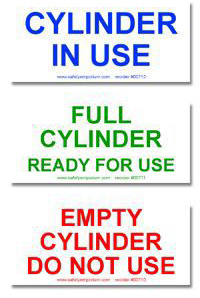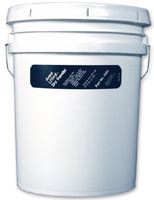| The Home page of ILPI's Safety Data Sheet (SDS) Resource, the leader in SDS information since 1995! | |
| The history and philosophy behind this resource. | |
| A curated collection of books and reference materials concerning Safety Data Sheets and closely related topics. | |
| Paste your plain text SDS into the SDS-Demystifier, and it will be converted into a hypertext-enriched document with links to detailed explanations of each key term. | |
| An extensive list of frequently asked questions about Safety Data Sheets including regulations, content, compliance, and more. | |
| A humorous take on Safety Data Sheet jargon. Fill in the blanks on our entry form to generate a personalized Unsafety Data Sheet to share with your coworkers. | |
| Since 1995, we've maintained this massive curated list of the best places to find Safety Data Sheets on the Internet. | |
| You are here! Way more than a glossary, this hypertext-enhanced resource covers hundreds of SDS-related terms and expert knowledge. Each entry includes both the SDS relevance and links to additional authoritative resources. | |
| Archived results of Safety Data Sheet related polls taken by some of our millions of site visitors | |
| The OSHA regulations behind SDS regulations, including the inspection guidelines and over 400 official interpretations letters under the Hazard Communication Standard | |
| Commercial suppliers of SDS authoring and management software as well as cloud compliance services. | |
| Commercial companies that will create SDS's for your specific needs as well as SDS translation companies. |

Safety signs, banners, and scoreboards? Get yours at Safety Emporium!
Definition
An inert chemical substance is one that is not generally reactive. This is a synonym for "inactive" with respect to chemical reactions.
Inert has a non-chemical meaning of being unable to move or resist movement; for example, "the accident victim was laying on the ground, inert."
Additional Info
In the periodic table of the elements shown below, the inert elements are shown in red. The noble gases, the last column of the table, include helium (He), neon (Ne), argon (Ar), krypton (Kr), xenon (Xe), and radon (Rn). Nitrogen (which, in the elemental form, occurs as N2 gas) is also considered inert although it forms a wide variety of chemical compounds.

These elements are unreactive because they are very stable in their naturally occurring forms. While some of these can be made to react chemically, their compounds are usually not very stable (except for nitrogen). The term inert atmosphere is usually used to denote a nitrogen or argon atmosphere in a container.
Chemical compounds can also be considered inert. For example, poly(tetrafluoroethylene), better known by the DuPont tradename Teflon™, does not react with most substances. Likewise, sand, SiO2, is generally unreactive.
We can also use the term to describe reactivity (or lack thereof) towards particular substances. For example, mercury reacts with aluminum metal (which is one reason why it is illegal to transport liquid mercury by aircraft) but is inert towards iron metal. Carbon dioxide is inert to many chemical reactions, but is incompatible (and can react violently) with alkali metals such as sodium and potassium. Using a carbon dioxide fire extinguisher on a magnesium fire would be a VERY bad idea.
Likewise, one may see the term "inert" used on pharmaceutical or pesticide labels to indicate components that are not active ingredients/components of the mixture. For example, pills are held together with binders that simply dissolve to release the medicine inside the pill. As the binder does not have any biological effect it may be referred to as a biologically inert ingredient.
While chemical inertness and biological inertness are often the same, sometimes a substance can be one and not the other. For example, while xenon does not chemically react in the human body, it nonetheless has biological effects that have been exploited for anesthesia as well as improvement of tissue damage caused by inadequate blood supply (ischemia)
SDS Relevance
Inert materials are good choices for chemical containers. For example, acid waste should not be stored in metal drums because these will quickly corrode. However, glass or polyethylene containers are inert to most acids.
If a chemical spill occurs, one may need to clean up the spill by using an inert absorbing material such as vermiculite or sand. The Safety Data Sheet will usually recommend a specific material, but not always. Assuming your SDS was created using the format required under HCS 2012, spill cleanup information will be found under Section 6 (accidental release measures). But be sure to read the rest of the sheet as well, because it's important that you know the physical properties of the material, the health hazards, incompatibilities etc.

Safety Emporium has a great lineup of gas cylinder signs, storage racks, clamps and more.
If the SDS is not clear, remember that you can phone the manufacturer at the phone number listed on the SDS. If you are using a spill kit, see if it came with a guide or instructions.
Further Reading
- OSHA has a publication titled Deaths Involving the Inadvertent Connection of Air-line Respirators to Inert Gas Supplies
- Inert Pesticide Ingredients are discussed at the U.S. Environmental Protection Agency.
- WebElements is an interactive periodic table of the elements. Click on any of the noble gases (or other elements) for a wealth of other information.
- A list of inert drug ingredients at Drugs.com.
- Some people believe that some "inert" drug components are not as inert as previously thought.
- The diverse biological properties of the chemically inert noble gases. from Pharmacol Ther. 2016, 160, pp 44-64.
- The American Chemical Society has a multipage article Neil Bartlett and the Reactive Noble Gases that explains the discovery of the first noble gas compounds.
See also: asphyxiant, corrosive, flammable.
